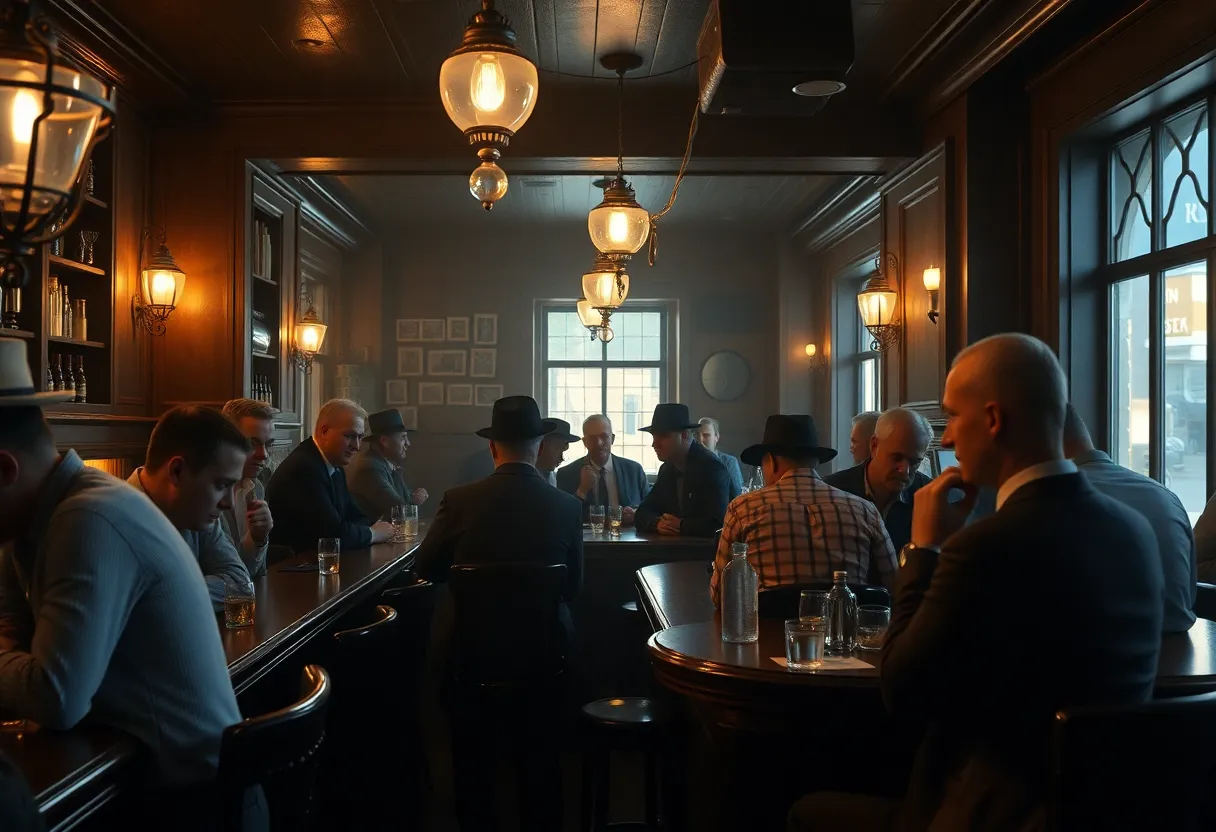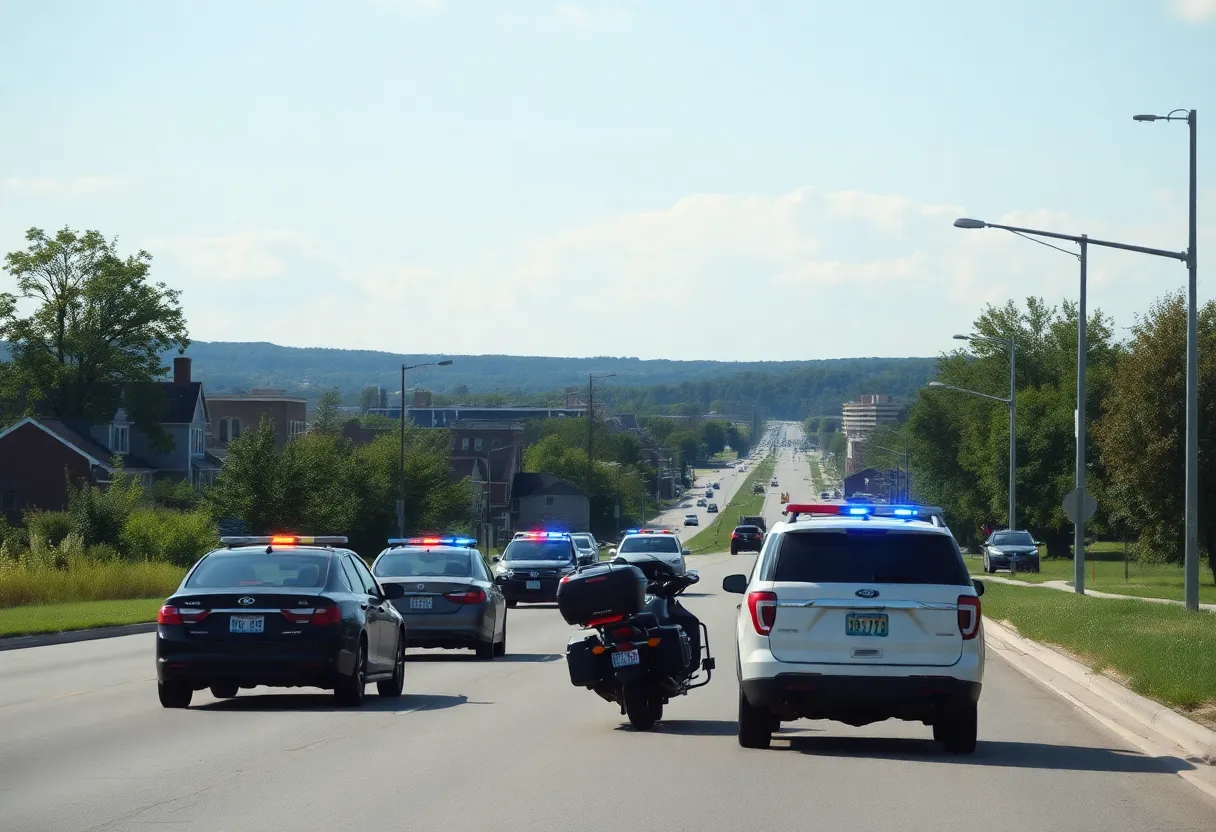News Summary
As Lexington celebrates its 250-year anniversary, the city reflects on the era of Prohibition that began on January 17, 1920. This time was marked by division among residents, with ‘drys’ and ‘wets’ finding creative solutions to navigate the challenges imposed by the federal law. Despite the closure of many local distilleries, Lexington adapted, showcasing resilience and ingenuity during a period of significant change.
Lexington Celebrates 250 Years of History with a Look Back at Prohibition
As Lexington marks its impressive 250-year milestone, it’s hard not to reflect on the city’s past—especially the intriguing era of Prohibition that began on January 17, 1920. This chapter in Lexington’s history brought about some dramatic twists, turns, and, of course, a little mischief.
Prohibition: A Divided Community
Prohibition was a time of division for the good folks of Lexington. Residents experienced it as a *mixed blessing*. While the “drys” celebrated what they viewed as a step toward societal improvement, the “wets” were left mourning the loss of their beloved beverages. This federal legislation shuttered the doors of many local distilleries, including some well-known establishments like Old Tarr and John Pepper.
It’s intriguing to note that Carrie Nation, a tireless advocate for the temperance movement, was born a stone’s throw away in Garrard County in 1846. Her efforts, along with the broader temperance movement that began in 1890, sought to ban liquor sales altogether, reasoning that alcohol posed a danger to society.
Fayette County: An Oasis
By 1914, only about 14 of Kentucky’s 120 counties remained “wet,” and Fayette County, where Lexington is located, was one of them. Can you imagine? The city became an oasis surrounded by dry counties, which certainly had an impact on the local nightlife. Before Prohibition loomed large, Lexington boasted more than 144 bars—a staggering one for every 300 residents!
The arrival of the temperance movement drastically changed the scene, shutting down roughly a third of the bars in the city. By 1919, that number had dropped to fewer than 100. Can you picture that? What a contrast to the lively bar scene that had once been so vibrant!
Celebrations and Secret Strategies
The day Prohibition went into effect, supporters of the dry movement gathered for a jubilant party at Broadway Christian Church. Meanwhile, those on the wet side were scrambling to find alternative sources for their cherished beverages. As creative problem solvers, many bars reinvented themselves as restaurants, complete with *secret speakeasy* backrooms, while others transformed into *candy and soft drink* stores—both clever fronts for the ongoing sale of liquor.
On the enforcement side, local law enforcement found themselves in quite the predicament. While they were technically granted the power to arrest violators of Prohibition, there wasn’t much eagerness to put those laws into action. Influential political figures like Billy Klair, who favored the wet side, swayed local authorities toward a more lenient approach.
Bootlegging and Brewing
As Prohibition set in, bootleggers started their own distilling operations in the more remote rural areas or even made daring raids on abandoned distilleries. Lexington Brewing Co., the city’s most prominent brewery, continued operations for several months into this dry spell, thanks in part to the mayor’s heavy investment in the business.
However, the feds were not going to let things slide forever. A federal raid on Lexington Brewing Co. culminated in the confiscation of approximately 6,000 bottles of beer. In an *unfortunate twist of fate*, many of these bottles mysteriously disappeared while stored at the federal courthouse. To prevent illicit consumption, approximately 5,000 of these bottles were disposed of in a rather *slapstick manner*: dumped into the sewer. This led to a rather noticeable *yeasty* aroma wafting through the city for several days. Can you imagine the conversations buzzing around town during that time!
Lexington’s Prohibition Legacy
Although the Prohibition era was a challenging time for many Lexington residents, it undoubtedly shaped the city’s rich history. This remarkable chapter reminds us how communities can adapt and survive through times of change—sometimes with a little creativity and a splash of rebellion.
As we look back on these past events, it is clear that the history of Lexington is vibrant and filled with captivating stories, reflecting both the resilience and ingenuity of its residents. Here’s to celebrating 250 years of a city that, even in the face of adversity, has kept its spirits high!
Deeper Dive: News & Info About This Topic
HERE Resources
19-Year-Old Charged with Murder in Lexington Shooting Death of Teen
Kentucky Appeals Court Denies Councilwoman’s Request to Lift Protective Order Amid Sexual Assault Allegations
Kentucky Clarifies Legal Cannabis Options as Medical Marijuana Laws Evolve
NY Appeals Court Maintains Gag Order on Trump Related to Hush Money Case, Rejects Appeal
Supreme Court Accused of Shaping Law Based on Personal Ideology: Humorous Errors and Questionable Decisions Detailed
Nassau County, New York Enforces Contentious Anti-transgender Sports Activities Law Aimed at Excluding Transgender Women and Girls from Women’s Sports
Wilmore City Council Approves 2024-2025 Fiscal Budget, Commends Motor Show Organizer for Successful Fundraising Event
Fayette County Convicted Felon Sentenced for Illegal Firearm Possession
Additional Resources
- Kentucky.com: Know Your Kentucky
- Wikipedia: Prohibition in the United States
- Breaking Bourbon: Town Branch R Overproof Release
- Google Search: Kentucky distilleries
- Kentucky.com: Bourbon Restaurants in Kentucky
- Encyclopedia Britannica: Prohibition
- Forbes: New Distillery in Kentucky
- Google News: Lexington Kentucky







